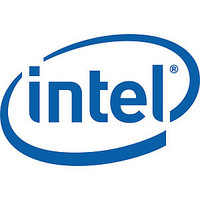SB82371 Intel Corporation, SB82371 Datasheet - Page 106

SB82371
Manufacturer Part Number
SB82371
Description
82371FB (PIIX) AND 82371SB (PIIX3) PCI ISA IDE XCELERATOR
Manufacturer
Intel Corporation
Datasheet
1.SB82371.pdf
(122 pages)
Available stocks
Company
Part Number
Manufacturer
Quantity
Price
Company:
Part Number:
SB82371SB
Manufacturer:
NSC
Quantity:
1 150
Company:
Part Number:
SB82371SB
Manufacturer:
INTEL
Quantity:
140
Part Number:
SB82371SB
Manufacturer:
INTEL
Quantity:
20 000
Part Number:
SB82371SB (SU093)
Manufacturer:
INTEL
Quantity:
20 000
82371FB (PIIX) AND 82371SB (PIIX3)
APICCS# is generated when the PCI memory cycle address matches the APIC’s programmed address and
the APICCS# function is enabled in the XBCS Register. The APIC address can be relocated by programming
the APIC Base Address Register (APICBASE).
APICCS# is only generated for PCI originated cycles and is not generated for ISA originated cycles. This PCI
cycle is forwarded to the ISA bus. To avoid address aliasing conflicts with other ISA devices, PIIX3 drives
SA[19:16] and LA[23:17] to 0 and drives SA[15:0] corresponding to PCI AD[15:2] and C/BE[3:0]#.
When the APICCS# function is enabled, the XOE#/XDIR# signals controlling the X-bus tranceiver and the
SOE#/SDIR signals controlling the IDE DD isolation transceiver are also enabled during accesses to the
IOAPIC.
The IOAPIC signals (APICCS#, APICREQ#, and APICACK#) are multiplexed with DD14, TESTIN#, and
PCIRST#, respectively. Figure 9 shows how these signals are connected in systems with and without the
IOAPIC device.
The internal IRQ0 signal can be routed to the external pin MIRQ0 using bit 5 in the MBIRQ Route Control
Register 0. This changes MIRQ0 to an output signal and allows the IRQ0 signal to be connected to the
external IO-APIC. The secondary IDE device interrupt should then be routed to IRQ15.
3.10.
The Pentium® processor with a Local APIC enabled in Virtual Wire (also called Through Local) mode
requires a minimum deassertion time on the INTR signal. The PIIX3 asserts INTR asynchronously in a
method compatible with the 8259A Programmable Interrupt Controller, which does not guarantee this
minimum deassertion time.
This only affects Pentium® processors which have a Local APIC and the Local APIC is in Virtual Wire mode
of operation. This results in the following system impacts:
106
INTR Signaling with Pentium® processor Local APIC in Virtual Wire Mode
Pentium® uni-processor system with no IO-APIC: No impact since the Pentium processor Local
APIC must be placed in Bypass mode of operation. This includes 430VX systems with PIIX3 and
430HX systems with PIIX3 but no IO-APIC.
PIIX3
PICRST#/APICACK#
TESTIN#/APICREQ#
DD14/APICCS#
RSTDRV
PIIX3 With I/O APIC
Figure 9. APIC Signal Connections
I/O APIC
CS#
APICREQ#
APICACK#
PCIRST#
RSTDRV
PIIX3
PICRST#/APICACK#
TESTIN#/APICREQ#
DD14/APICCS#
PIIX3 Without I/O APIC
RSTDRV
apic_sys.drw
No
Connect
TESTIN#
PCIRST#
RSTDRV
APIC_SYS












